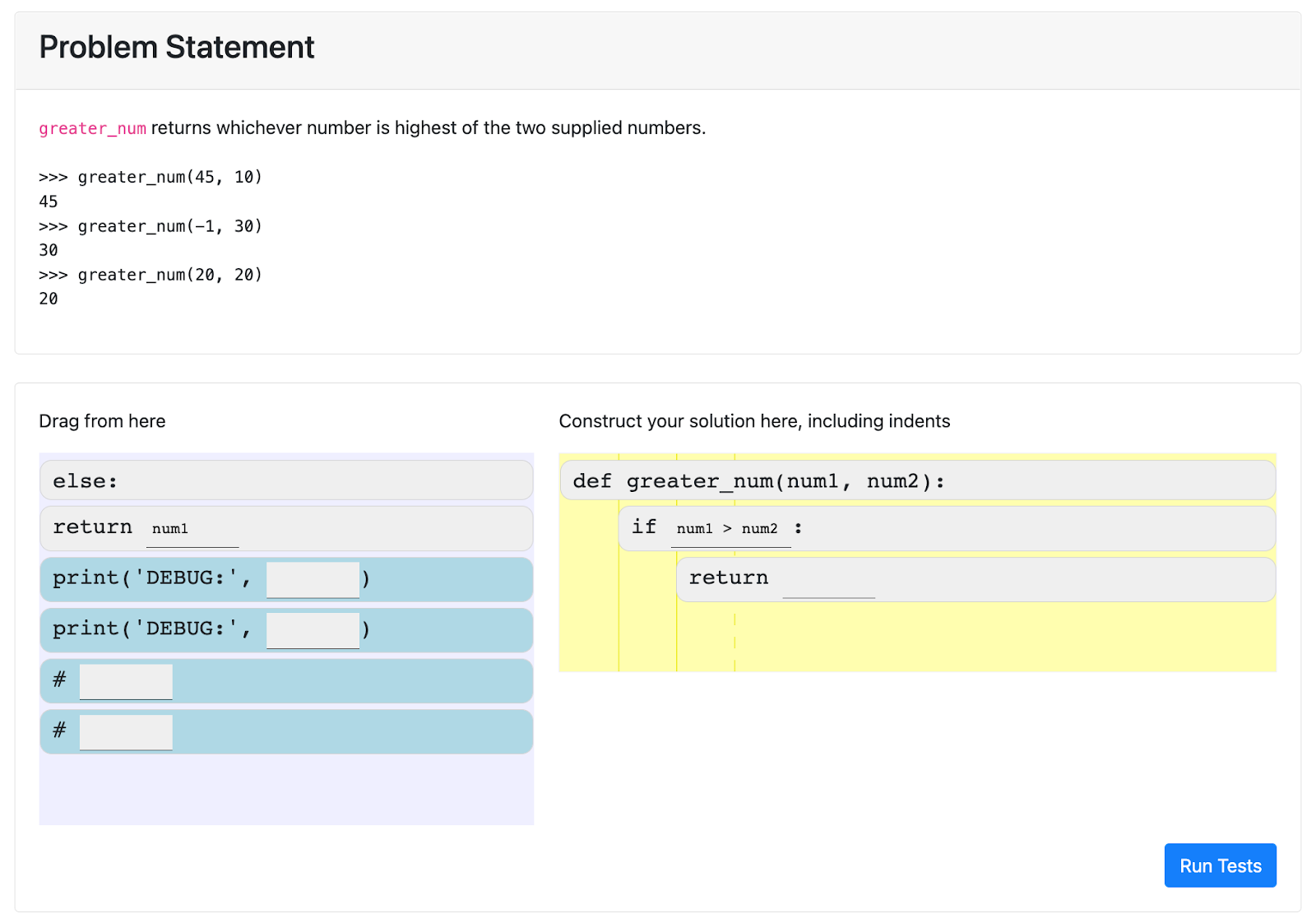A Parsons Problem is a kind of programming exercise where learners rearrange blocks of code in order to create functional programs, and has been shown by CS Ed researchers to be an effective way to learn code writing skills. One particularly helpful aspect is that students are re-creating an expert solution, versus writing sub-optimal or messy solutions, so they pick up better programming practices along the way. [See Barbara Ericson's dissertation for more details.]

However, one issue with Parsons Problems is that some learners may brute force the solution, trying all possible orders without thinking. Fortunately, UC Berkeley Ph.D. student Nate Weinman invented Faded Parsons Problems, a variant where the blocks sometimes have blanks in them, and learners must fill in the blanks after arranging the blocks. Learners are no longer able to brute force, but they still receive the other benefits of Parsons Problems. [See Weinman's CHI 2021 research paper for more details.]

While I was teaching CS61A at UC Berkeley, we experimented with integrating Faded Parsons Problems into our Python class assignments. To complete the problems, students ran a local Flask server on their own machine that sent data to our OKPy grading infrastructure. It seems to have been a positive addition to the course, though we discovered it was difficult for many students to run a local Flask server on their personal laptop. [A research paper is in the works with more details on what we learned.]
I wanted to try using Faded Parsons Problems in my upcoming Python course and to make it generally easier for any teacher to use them, so I've made a website that can run Faded Parsons Problems entirely in the browser (no backend). The website uses Pyodide to run the Python code and localStorage to remember learner progress.

The website checks the correctness of the learner's solution using Python doctests and displays pass/fail results. It also shows syntax errors, which can happen if they indent the blocks incorrectly or write something syntactically incorrect in the blanks.

The website is deployed on my Github pages currently, but it can be deployed on any static website hosting platform. If you're a Python teacher and would like to make up your own problems, you can learn more from the Github project README. Let me know if you end up using this in a class; I'd love to see your problems and hear how it goes.
If you teach a different language besides Python, it may be possible for you to get it working if there's a way to run that language in the browser. Forks or pull requests are welcome.
No comments:
Post a Comment